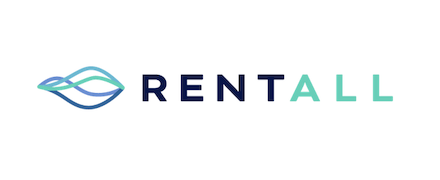Cloudify Review
 OUR SCORE 82%
OUR SCORE 82%
- What is Cloudify
- Product Quality Score
- Main Features
- List of Benefits
- Technical Specifications
- Available Integrations
- Customer Support
- Pricing Plans
- Other Popular Software Reviews
What is Cloudify?
Cloudify is a cloud orchestration software built on a framework and architecture that uses TOSCA. It is designed to automate a variety of tasks including modeling, development, deployment as well as management of business applications and network services across the stack and hybrid cloud environment. It comes with a wide array of capabilities that streamline and automate the governance of various cloud resources while ensuring that all processes remain compliant with regulations. It offers widgets and templates that give users seamless access to the data they need and make organizing and manipulating the said data to craft models of the app and network topologies easier. Users can also find the process of creating dynamic topologies easier with the aid of the platform’s intuitive drawing tool. Last but not least, telecommunications service providers, as well as operators, can use the system to have their non-virtualized appliance ecosystem replaced with a virtualized infrastructure, which implements Node Functions Virtualization, a network architecture concept.Product Quality Score
Cloudify features
Main features of Cloudify are:
- Local Blueprints
- Templates & Pages
- Tenant Management
- LDAP Integration
- Custom Widgets
- Two-Way Editing
- Cluster of Cloudify Managers
- Built-In Node Types
- Blueprints Catalog
- TOSCA-Based Models
- Widgets
- TOSCA Orchestration
- IT Governance and Security
- Snapshot Creation & Restoration
- Blueprint Modeling
- Role-Based Access Control
- Communication & Access
- NFV Capabilities
- Resource Visibility & Secret Storage
- Cloud Orchestration
- Deployments Page
- Virtualization Orchestration
- Graphic Editor
Cloudify Benefits

The main benefits of Cloudify are its blueprint modeling, powerful and easy-to-use graphics editor, source code editing capability, a variety of built-in templates and widgets, and tenant management. Here are more details:
Blueprint Modeling
One of the most innovative and powerful features of Cloudify is its Blueprint Modeling that enables developers to craft the blueprints of app topologies using YAML, a data serialization language which is human-readable and is utilized for writing TOSCA-based definitions. Topology & Orchestration Specification for Cloud Application (TOSCA) is a specification that can be used to describe the components of an app, a system, as well as a cloud infrastructure, in a standard way.
Powerful & Easy-to-use Graphics Editor
Cloudify is built with Composer, a powerful and easy-to-use graphic editor that comes with a drag-and-drop user interface design. This allows developers to build complete app topologies in a matter of minutes and a few clicks.
Source Code Editing Capability
Cloudify’s graphic editor comes with a capability that allows users to edit their source code directly from Composer. With this capability, users can also make alterations to their blueprints in a breeze and even makes it possible to duplicate sections from various blueprints and then include them to any blueprint they are working on.
Built-in Templates and Widgets
Cloudify comes with a variety of built-in templates that consist of pre-defined pages as well as widgets, which can be found on the platform’s catalog. This allows users to access the needed data with ease and view particular areas of the system. The widgets, on the other hand, allow users to view any data such as deployments, execution, and blueprints within the system, gather information from third-party platforms and even perform particular actions. Users can even create their own widgets, configure their functionality such as how it will present information, and add them to the existing set of built-in widgets.
Tenant Management
This feature allows users to organize their resources in the cloud into separate tenants, which can be accessed in the Cloud Manager. With this functionality, users can choose who can see what in the platform. This helps in defining the team members who will do the execution, upload the blueprints, or deploy resources.
Technical Specifications
Devices Supported
- Web-based
- iOS
- Android
- Desktop
Customer types
- Small business
- Medium business
- Enterprise
Support Types
- Phone
- Online
Cloudify Integrations
The following Cloudify integrations are currently offered by the vendor:
- Google Cloud Platform
- Docker
- Kubernetes
- Amazon Web Services
- OpenStack
- Microsoft Azure
- OpenStack
- Docker
- ELK-Stack
Video
Customer Support
Pricing Plans
Cloudify pricing is available in the following plans:





